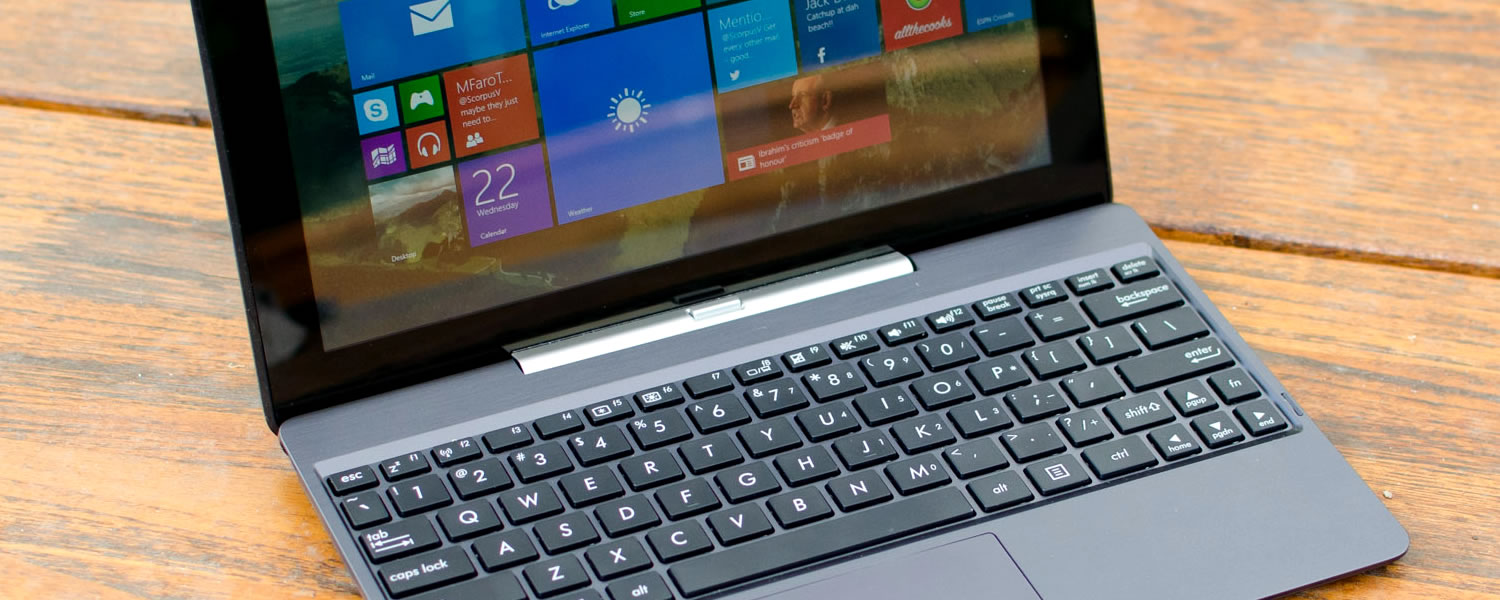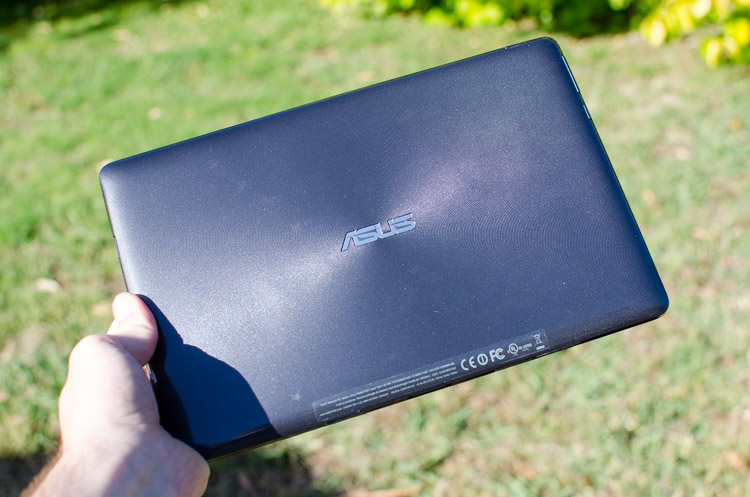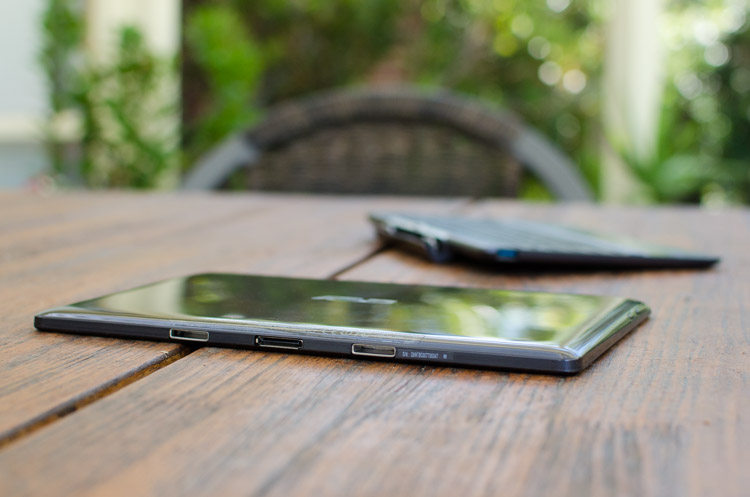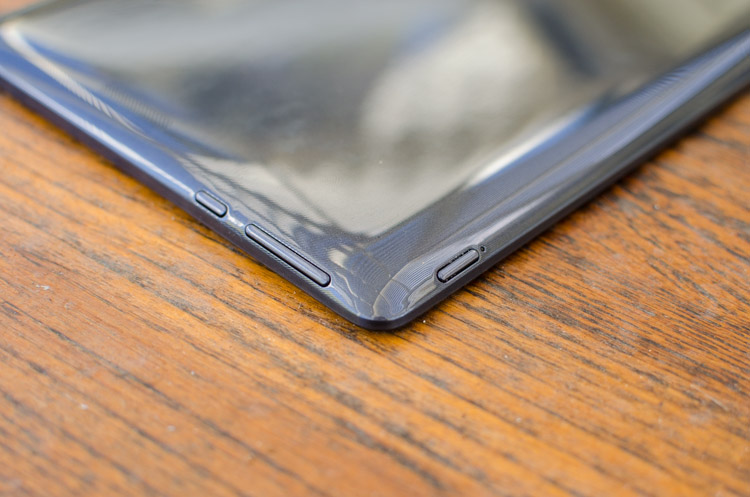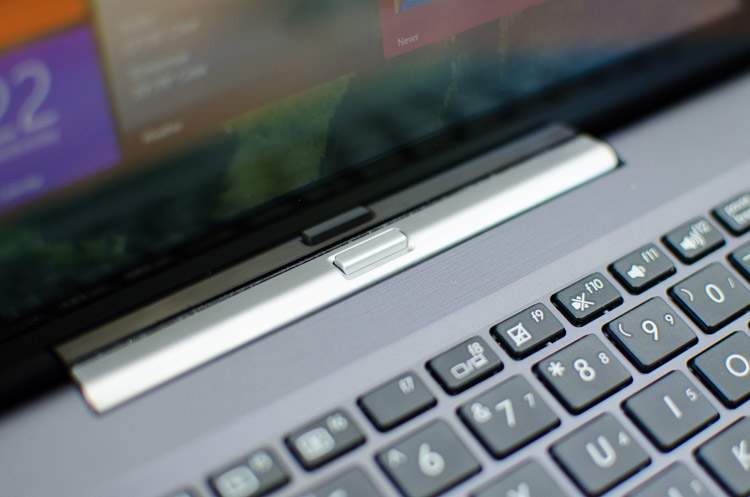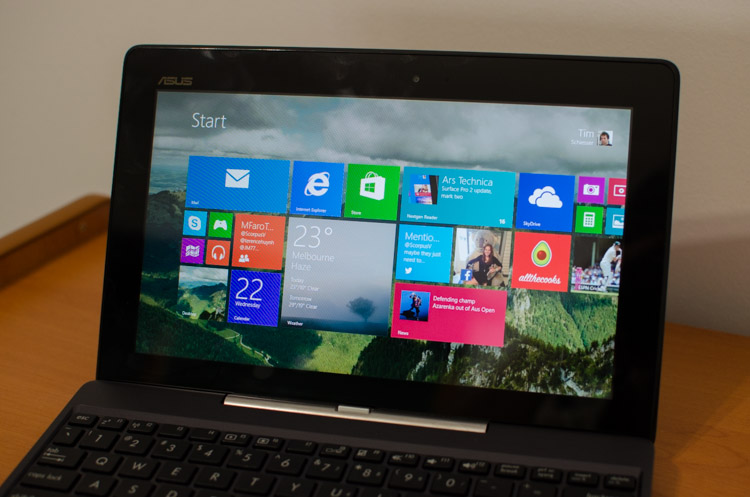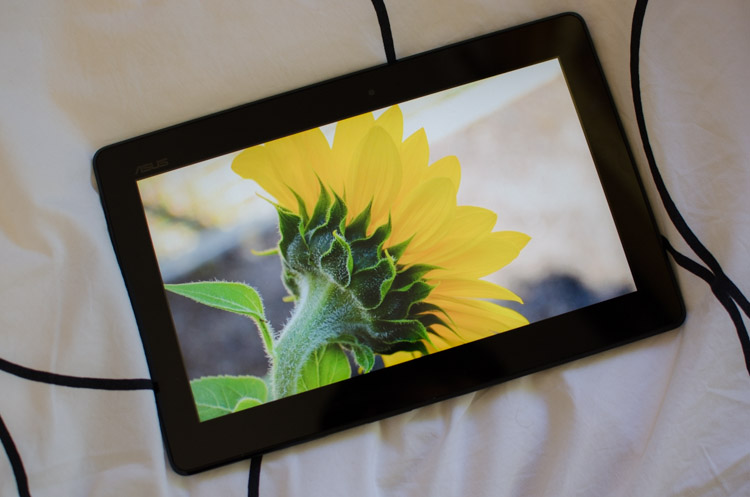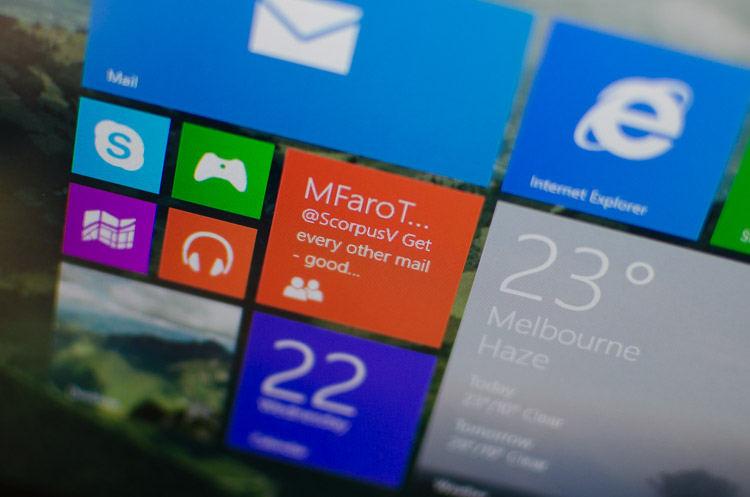Windows is still relatively new to the tablet market, with the launch of Windows 8 occurring just a little over a year ago. But that doesn't mean the market isn't filled with options for consumers, ranging from ARM-based Windows RT options such as the Microsoft Surface 2 and Nokia Lumia 2520, to full-blown Windows 8.1 convertibles and hybrids.
Asus Transformer Pad T100 - $425
- 10.1", 1366x768 IPS LCD (155 ppi)
- Intel Bay Trail Z3740 SoC
- 1.3 GHz quad-core CPU, HD Graphics GPU, 2GB RAM
- 32 GB internal storage, microSD card slot
- Keyboard dock accessory included
- Wi-Fi a/b/g/n, Bluetooth 4.0, 31 Wh battery
- Windows 8.1 + Microsoft Office
- 550 grams, 10.5mm thick
High-end tablets tend to capture a lot of attention from the press thanks to their fancy features and top-tier hardware, but sometimes the entry-level products can be the most interesting.
The device I'm looking at today is one such entry-level product, the Asus Transformer Book T100, which consists of a 10-inch tablet, Intel 'Bay Trail' internals, and a keyboard dock all for under $500. The Transformer line of products has typically been quite solid, so it'll be interesting to see how an affordable Windows-based model fares.
The 10-inch Windows convertible market is quite crowded, so how will the T100 stand out? Are the tablet's trade-offs too much for the asking price?
Design
Asus' typical tablet design is once again harnessed for the Transformer Book T100. To be honest, there's not a great deal of things a company can do to shake up the standard 10-inch tablet form, but at least Asus has managed to work in a few signature touches. The circular radial pattern on the back has returned, with prominent Asus branding, giving the device a great shine in the light.
However the pattern doesn't provide any texture, with Asus opting for a glossy, smooth plastic coating over the deep-grey back. Other Asus tablets tend to use matte plastic that preserves the gentle ribbed feel caused by the radial pattern, which gives the tablet a nicer texture, but instead the T100 is smooth all over. That includes the glass protecting the touchscreen, which is coated to assist fingers swiping across the display.
Despite a mostly plastic construction, the T100 feels remarkably solid. There is a small amount of flex in the back panel when a large amount of force is applied, which is a by-product of using plastic rather than metal. It definitely doesn't feel like the tablet is going to snap in half, and a small rim around the screen should help slightly to protect the glass in the case of a drop. Naturally, both the front and back of this glossy device are huge fingerprint magnets, but they seem quite scratch-proof.
The front of the tablet is buttonless, ditching any sort of Windows button for a minimalist profile. Above the 10-inch display you'll find some branding to the left, plus an off-center front facing camera, and an ambient light sensor. Here we're dealing with your standard slate-style tablet; perhaps a tad wide due to the 16:9 display aspect ratio, but there's enough bezel to hold the device comfortably.
The left edge sees both a volume rocker and the relocated Windows button, the latter of which definitely feels like a mandatory Microsoft-forced inclusion (it is) rather than a thought-out, ergonomic placement. Along the top you'll find the power button to the left, while the right hand side has all the ports. The T100 gives you a micro-USB port, micro-HDMI port, exposed microSD card slot and 3.5mm audio jack.
Along the bottom are the very visible dock connectors: two for hinges and one for data. They aren't particularly aesthetically pleasing, and occasionally you'll feel them when holding the tablet in portrait orientation, but they facilitate the connection of a useful accessory. Stereo speakers are included on the back of the tablet, which is fantastic for watching videos and playing games.
At 550 grams the tablet falls in the middle of tablet weights. In my usage I didn't experience much arm fatigue when using the device for lengthy periods. The T100's width of 10.5mm isn't amazing either, but the curved edges attempt to hide some of this fatness, especially when it's in your hand.
If I had to describe the T100's design in one word, it would be 'functional'. Asus didn't meant to shatter any design records, instead focusing their engineering efforts into keeping the build affordable yet strong.
Display
Don't expect anything too amazing from the Transformer Book T100's display. Here we're talking about a 1366 x 768 IPS LCD display sized at 10.1 inches, which is modest considering the standard now rests at 1920 x 1080. It's clear that Asus has used this type of display to keep costs down - after all this is a budget device - but the resolution in particular leaves much to be desired.
The 10.1-inch panel uses a 16:9 aspect ratio, which is a little awkward when holding in landscape mode compared to a 4:3 iPad or 16:10 Nexus 10 with a similar display size. But the aspect ratio does allow most TV/film content to be played in full screen with few (if any) letterboxing, making this sort of tablet well suited as a media player. Having such a wide panel is also good for running two apps side-by-side using snapping in Windows 8.1.
Quality of the panel itself is reasonable, as expected from an IPS TFT LCD screen. Like many displays Asus has used in the past, color accuracy is quite good, as are the viewing angles. Contrast, black levels and general display vibrancy aren't as good on the T100 as I've experienced from other devices, but still very acceptable for a budget tablet.
Brightness is average, if tending towards the low side when considering the reflective glossy protective coating. The tablet does include a photodetector to automatically adjust the brightness depending on the conditions, and it generally works quite well, but it can be difficult to read text on the display when outdoors in the sun.
The resolution is obviously the most disappointing aspect of the Transformer Book T100's display with its 155 PPI. 768p has remained the 'default' resolution of sorts for generations of Windows laptops, however the market is shifting away from this relatively low resolution in favor of 1080p and higher. One great example of this is Microsoft's Surface, which ditched 768p in the Surface RT for 1080p in the Surface 2.
The T100 is missing the crispness and clarity of a high-density display like is included in the iPad Air, Nexus 7 or Surface 2, and it's most noticeable in text-heavy applications like Twitter or Internet Explorer. While you're less likely to notice when viewing images, you won't see as much detail as a high-res panel.
It's clear that the biggest trade-offs have been made in the display department to keep the T100 under $500. The tablet by no means includes a terrible display, but its low-resolution can't match other devices in the same price bracket, which could end up being a major weakness for some buyers.
